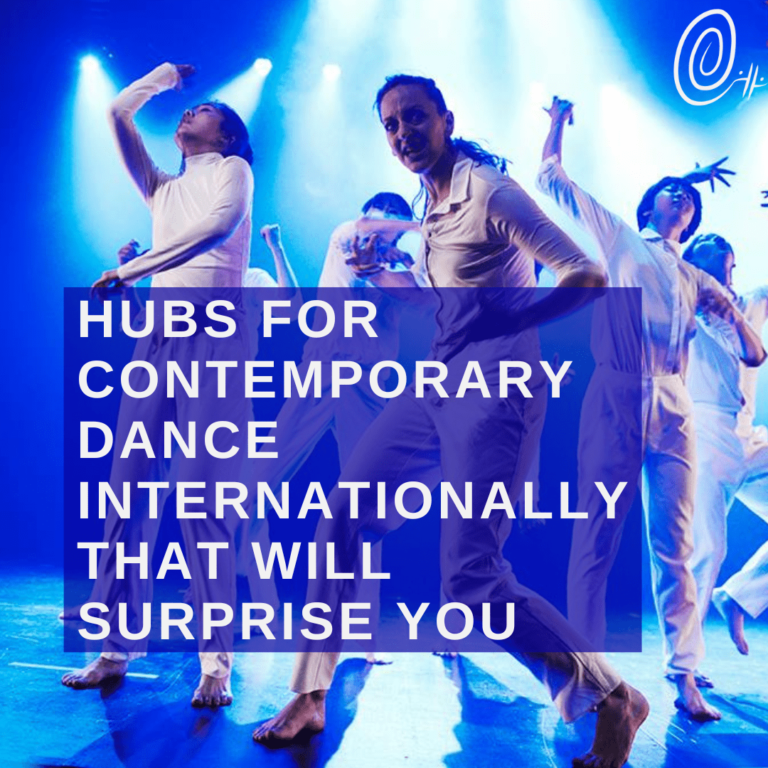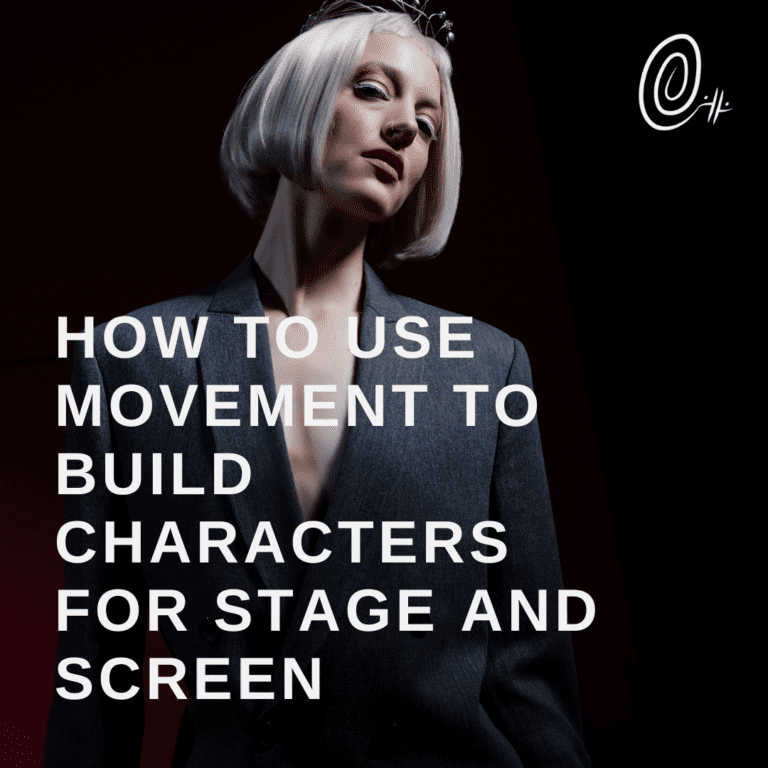How to Use Improvisation in Practice and Performance
Improvisation is one of the best skills I ever learned in performing arts. And yes, I mean skill! It’s something that you can learn and get better at. As a performer, I use improvisation both in my studio practice and performance. There are some dance styles which are entirely based on improv, such as contact improvisation. That’s not what I’m talking about here – I’m talking about spontaneous, un-choreographed movement.
In practice and performance, this approach is a great way of generating ideas, diversifying your movement, and finding new and interesting expressions. In this article I’ll walk you through a few exercises to train your ability to improvise, share some tips I’ve learned along the way, and discuss how improvisation can be a powerful tool for choreography and storytelling techniques, both in the conceptual stage and performance.
How to Learn Dance Improvisation
First of all, don’t be afraid! Making up things on the spot can be really scary. I haven’t done a lot of theatre but whenever I’ve done theatre workshops the improv and improv comedy are the parts I fear the most. I don’t think very quickly, and by the time I’ve thought of something witty to say, the opportunity has passed. However, that’s just because I haven’t practiced. I have practiced dance improvisation, and over the years as a professional performer I’ve gotten better and better at it. In fact, these days I’ve gotten very lazy – I don’t choreograph all my movements anymore, I just make a structure and improvise the rest! I’ll talk about the advantages and disadvantages of that later though.
For now, let’s talk about how to start. If you go to a dance studio and someone tells you “just move,” at first you probably freeze. Your mind goes blank. That’s why I don’t actually recommend starting from scratch. I also recommend starting out in your own space – dance studios rarely teach improvisation, which is a shame. They use it all the time in dance classes, but don’t necessarily teach the technique.
So what to do? I suggest you create a very basic ‘improvisation score.’ A score is the equivalent of a script. It’s a little like a set of rules. For example, my go-to basic score is that you can do the following moves: sit, stand, stop, and walk. You don’t need to make the moves ‘dance-y.’ You don’t have to make them graceful or try to walk on your tip toes. Just do them like you are doing any everyday movement. You could also have a score such as “only move in circles” or “you can walk backwards or forwards, reach, or look left.” Anything is possible, but at the beginning, keep it simple and clear.
Using music? Up to you
When you are practicing your score, you can use music or not. Sometimes it helps, but sometimes it also makes you feel like you need to do something pretty, and the number one rule of improvisation in practice is don’t worry what it looks like! The moment you start getting lost in the performability of the improv, you get lost. So, give yourself a set time, such as five minutes, and then begin to perform your score. At any given moment, you have to decide if you will sit, stop, stand, or walk (I’ve done a YouTube video on my tutorial channel that demonstrates this basic score which you can see here.)
At first, it will feel strange, and you might start to get bored. But keep going and complete your time. Try not to add anything or think about what you’ll make for dinner. Keep making decisions, one after another. The next time you do it, you can add small ordinary gestures, like brushing teeth or taking a selfie. Or you can change the score and try something else. Don’t change the score in the middle of your practice, though, and don’t end it early. Try giving yourself longer periods to fill. If you get stuck or you don’t know what to do, stop and wait until you get another idea. Most importantly, be intentional about every moment you do. Decide to do it before you carry it out.
Tips for improving your dance improvisation
What does this dance practice do? Basically, you are training yourself to make clear decisions on the spot about what movement you will do. As you create more complicated scores or allow yourself to do more complicated movement, you will have to think faster and clearer.
That brings me to a few tips that you need to keep in mind in order to smash your improv game out of the park.
The first is, don’t worry about what it looks like. You can film it (and this does help) but don’t look at the prettiness of the movement – look at how intentional you look, if it seems like you know what you’re doing, if your decisions are clear, if the movements are clear. We can really limit the type of movement we can do if we think about the beauty of it, and when it comes to storytelling techniques, this thinking leads to something like ballet: it’s very pretty, but it’s not very deep. (That’s a personal opinion, but hey – proof this article was written by a human and not an AI.)
The second tip is, allow yourself to be surprised! Sometimes you might find that the movement leads you somewhere new, or to a position you’ve never been in. You have to take the time to figure out what it is and how to get out. And that’s the great thing about improvisation! If you are able to get into the flow and stay present, then it can lead you to lots of new movements and new ways of moving. Our bodies get stuck in habits and if you pay attention you might notice you do the same movements over and over. Dance improv is a great way to shake up those habits.
Next, remember to take your time. You don’t always have to move. You don’t have to do everything in your score. Maybe you just walk, or maybe you sit for two minutes. That’s part of being surprised like I said above. Try doing a score multiple times, but don’t choreograph it or try to repeat. Let yourself discover what this new experience has to offer.
And finally, improvisation works best if you approach it with a playful attitude. You are playing with movement, exploring it and see what all is possible. It can be super fun!
Improvising in a group?
Working on your own is a good way of getting better fast as you only have your own ideas to act on. Improvising in a group can be easier, because you can borrow ideas from other people. One thing you can do that makes group improvisation really interesting is create situations that cause some kind of tension or change.
I don’t mean get in someone’s way or anything annoying like that. After all, the performing arts is a collaborative effort and there’s nothing worse in a theatre or dance group than a troublemaker. I mean, if everyone is still, you might run. If someone is sitting, you might come and sit in front of them. If someone is walking, you might walk backwards next to them. In each case, you are taking the context and adding something of your own to it, which will inspire others to add their own things to the pot.
Using Improvisation for Choreography, Storytelling Techniques, and Performance
Many choreographers use improvisation to research new movement, and some also rely on it for performance. I’ve sometimes even built performances around it. In some dance companies, choreographers will give the dancers various scores and inspirations until they find a score that works for what they want to portray, and then develop a structure of performance that leaves the actual movement up to the dancers. The company I danced for in South Korea, Second Nature Dance Company, was like that. In an hour long performance, we had just a few sections which were choreographed – the rest was a careful structured improvisation that had certain moments or timing we had to catch.
If you are choreographing for yourself or for dancers, finding various scores or inspirations and improvising on them is a great way of generating movement, whether or not you fix it later. In rehearsal, you can set up a series of improvisations with music and see how the movement matches with the story you want to tell.
On the surface, improvising a performance might seem scary, but if you are afraid of forgetting your movement, dance improv is the cheat code. If you are comfortable with improvising, you never need to worry about forgetting moves due to stage fright again! Either you can improvise until you remember the choreography, or just use improvisation as the base of the performance.
Finally, you can use improv to find more interesting ways of telling stories or expressing emotions. For example, if you want to develop more movement around sadness, you could find a few sad songs and improvise, gradually adjusting your score to nudge you towards new kinds of movements within the sad genre.
Wrapping up
I’m a big believer in improvisation, but I think it’s something that needs practice. Most dance studios don’t teach it specifically, they just use it, and it can be hard for new dancers to get into. By starting with basic scores and working your way up, you can gain confidence and push your own style forwards.
Interested in some examples of basic scores and how they look? Here are two examples from my youtube: one is about making shapes with the body, and the other is playing with micro vs macro movements.







